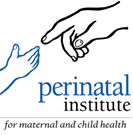| D1 At my Trust we use 2500g as our cut off for postnatal monitoring of growth restricted babies rather than below the 10th centile as we do not want to medicalise care for healthy babies. Is this appropriate? |
| Since gestational age is now routinely determined at the beginning of each pregnancy, the 2.5 kg cut off is no longer useful, as it mixes up smallness due to immaturity, constitutional factors, and growth restriction. The term ‘small for gestational age’ (SGA) gets around this problem by adjusting the fetal or neonatal size according to the gestational age, with the usual cut-off being the 10 centile, and this limit is further refined by using the customised GROW (gestation related optimal weight) standard. See GAP Guidance. |
| D2 How do we calculate a customised birth weight centile? |
The customised birth weight centile is calculated using any of the GROW software options (GROW-App, GROW-Centile of GROW-API). The date of birth, gender and birth weight of the baby is entered. If your hospital is using the GROW-App or GROW-API it will also ask you some additional questions:
- Unit responsible for providing antenatal care
- Outcome (whether the baby was a live birth or stillbirth)
- Referral for suspected fetal growth restriction, based on fundal height measurement(s)
- Detection of small for gestational age or fetal growth restriction (based on ultrasound scan)
This information is used to provide individual Trusts/hospitals with reports on SGA and FGR, referral and detection rates. |
| D3 We plot the birth weight onto the GROW chart to identify the birthweight centile- is this accurate? |
| The term optimal weight (TOW) when creating a chart is calculated without taking the sex of the baby into account. Once the baby is born and the sex confirmed the centile can be generated and used to populate Trusts referral and detection of SGA reports. Plotting the birth weight onto the gender-neutral chart may not accurately represent the centile. |
| D4 How do I calculate birthweight centiles in a twin pregnancy? |
There are 2 options for how your trust can approach the centile calculation for twin 2. Either:
- At booking produce a second chart using the identical maternal characteristics including parity. The chart number can be noted and documented in an agreed place for the second centile to be calculated at delivery. This chart does not need to be printed out and is not used during the pregnancy.
Or,
- At delivery, a second chart can be produced using the identical maternal characteristics as at booking including parity (do not add parity for twin 1). This chart ID can now be used to calculate the centile for twin 2.
Do not ‘over-write’ twin 1’s details on the centile page to calculate twin 2, this will affect your trust reports.
|






